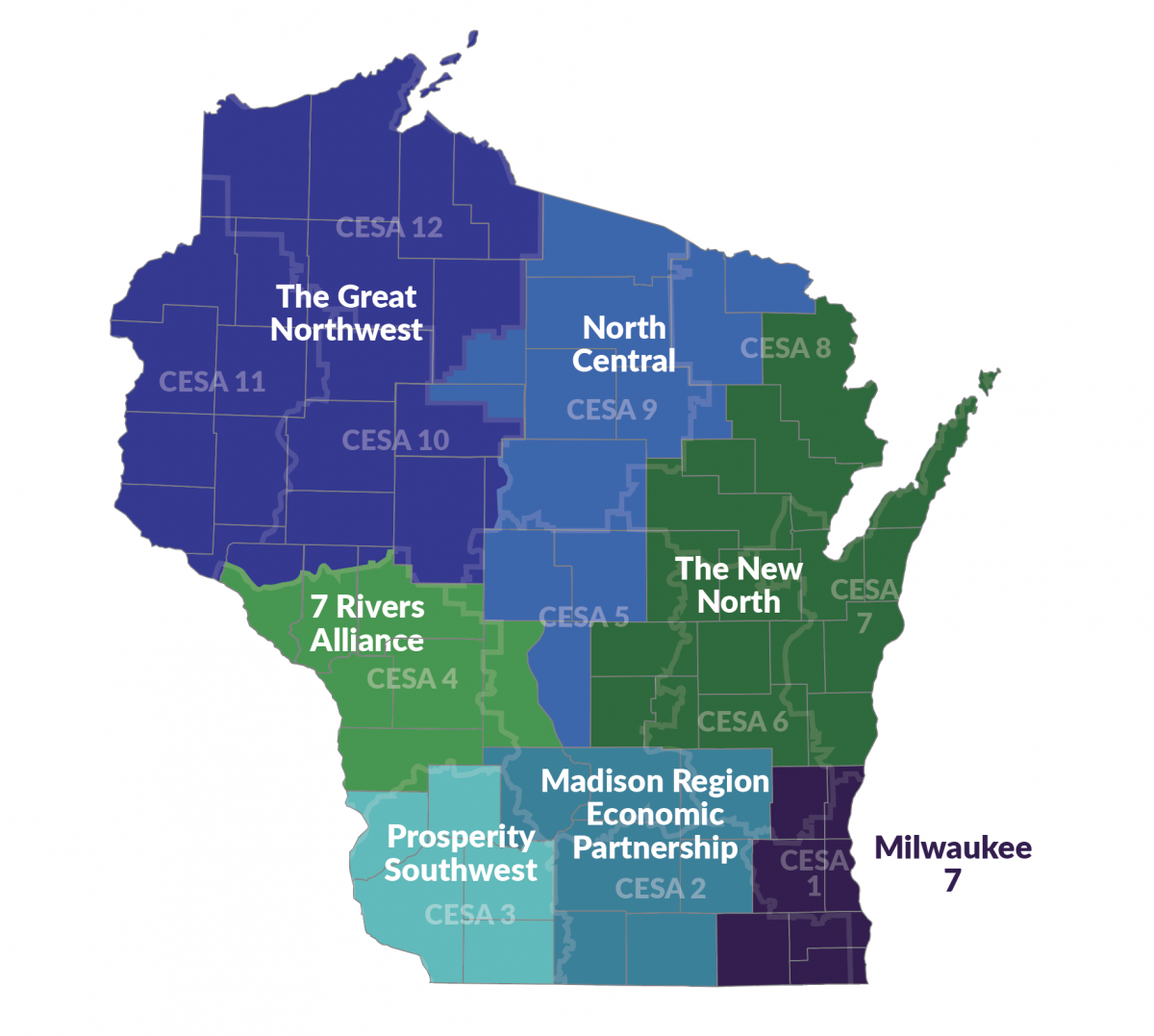Pathways Wisconsin is a statewide effort to deliver high-quality career-oriented programming in high schools that reflects the talent needs of prospective employers in their communities.
 Focused at the regional level, the program is tailored to the specific needs of each of the nine regions. A region follows the geographic boundaries of the local regional economic development organization. Within each one, career pathway collaborative groups bring together employers, workforce and economic development organizations, higher education professionals, districts, and Cooperative Educational Service Agencies (CESAs.)
Focused at the regional level, the program is tailored to the specific needs of each of the nine regions. A region follows the geographic boundaries of the local regional economic development organization. Within each one, career pathway collaborative groups bring together employers, workforce and economic development organizations, higher education professionals, districts, and Cooperative Educational Service Agencies (CESAs.)
What are the Benefits of Regional Career Pathways?
For Schools
Career pathways provide a specific academic and career plan for occupations that are in demand in Wisconsin. This allows schools to focus on student and curriculum activities with input and support from regional employers and higher education.
For Students
Regional career pathways align education and training with the needs of the local job market, provide a range of postsecondary options, result in a high school diploma with at least one industry-recognized credential, and help students enter or advance within an occupation.
For Employers
Regional career pathways make partnerships with a greater number of schools possible, allowing employers to shape the future talent pipeline, foster young talent, and highlight local career opportunities across an entire region.
MadREP has taken an active role in Pathways Wisconsin since its inception, adding four pathways in the Madison Region (Patient Care, Digital Tech, Advanced Manufacturing and Construction). We expect to add a fifth agricultural pathway this year.
Businesses in our Region have highlighted talent development as a top concern for several years and it has only increased since the onset of the pandemic. If your business would like to take an active role in cultivating your next generation of talent, fill out this brief intake form to get started.




